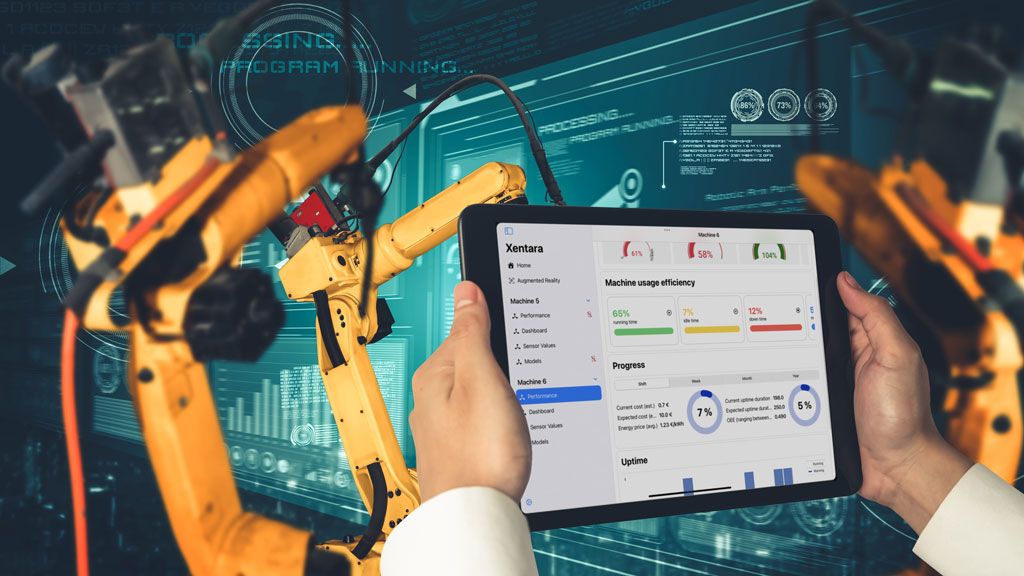Case Study IoT Readiness - Edge Intelligence
A leading packaging machine OEM enhanced its equipment with Industry 4.0 capabilities using Xentara, enabling real-time data visualization, machine learning, and system interoperability. Xentara streamlined integration with legacy systems, improved data security, and supported predictive maintenance and AR/VR tools. Results included a 20% reduction in hardware costs, 30% faster commissioning, 20% lower scrap rates, 30% efficiency gains, and up to 15% energy savings—boosting competitiveness and operational excellence.

Customer: Leading Provider Processing & Packaging Solutions
“Industry 4.0 is now reaching shopfloors. We need a scalable solution to turn real-time data into intelligence, making our machines truly smart. Xentara makes that possible.”
VP Food Packaging, Packaging Machine OEM
The client is a premier supplier of processing and packaging solutions for the pharmaceutical, culinary, and confectionary sectors. The OEM, with decades of innovation and competence, provides a complete array of machines and systems designed to address the varied requirements of its global clientele. OEM's solutions, ranging from filling and sealing machines to comprehensive packaging lines, are engineered to provide precision, dependability, and efficiency across the production process. OEM is dedicated to assisting its customers in attaining success in a dynamic market environment, emphasizing quality, safety, and sustainability.
In reaction to industry trends and consumer needs, OEM is compelled to enhance its machinery with Industry 4.0 functionalities, including the visualization of PLC control data and the application of machine learning for process optimization. This undertaking has difficulties. Integration complexity derives from legacy systems, and safeguarding data becomes paramount. Employee training is crucial for leveraging these new functionalities, and interoperability among various systems must be established. It is essential to balance financial considerations with regulatory compliance and to address employee resistance to change. Ultimately, ensuring reliability while adopting Industry 4.0 requires a holistic strategy that includes technology, training, and organizational preparedness.
In response to these problems, our approach to enhance OEM equipment with Industry 4.0 capabilities is the deployment of Xentara as a central platform for data collecting and control. Xentara functions as the foundation for the integration of diverse data sources, including current PLC controls, to facilitate the visualization of real-time production data.
Xentara enables the implementation of machine learning algorithms to improve process quality and efficiency management. By utilizing Xentara's functionalities, OEMs may optimize the integration process, resolve compatibility challenges, and guarantee uninterrupted communication among diverse systems. This centralized strategy not only mitigates the intricacies of incorporating Industry 4.0 elements but also improves data security and interoperability.
Moreover, Xentara enables OEMs to realize the whole capabilities of their equipment, allowing them to adjust to changing market requirements and maintain competitiveness in the digital era.
Software Components Provided
- Xentara Core for Data Management
- Xentara Core for Industrial Control
- Xentara App for iOS including AR / VR
- various I/O interface Skills
- Time Series Database interface Skill
- Machine Learning connector Skill
- Northbound connectivity Skills
- Soft PLC control Skill
Deliverable Work Packages
- End-to-end lighthouse projects for client field trials (data gathering, conversion, visualization, analytics, augmented reality)
- Retrofit solutions for machinery installed at client sites
- Development of the next-generation (Xentara native) machinery and control platform
- Anomaly detection and predictive maintenance, encompassing dashboards
Outcomes Compared to No Data Based Applications and Services
Competitive Advantage
- Series hardware cost reduced by 20%
- 30% reduction in commissioning effort and faster time-to-market
OEE Improvement
- Scrap rates reduced by 20%
- Efficiency increased by 30%
Resource Optimization
- Machine-specific energy consumption decreased by 10 to 15%
Share this article
If you found this article helpful, please share it with your friends!

